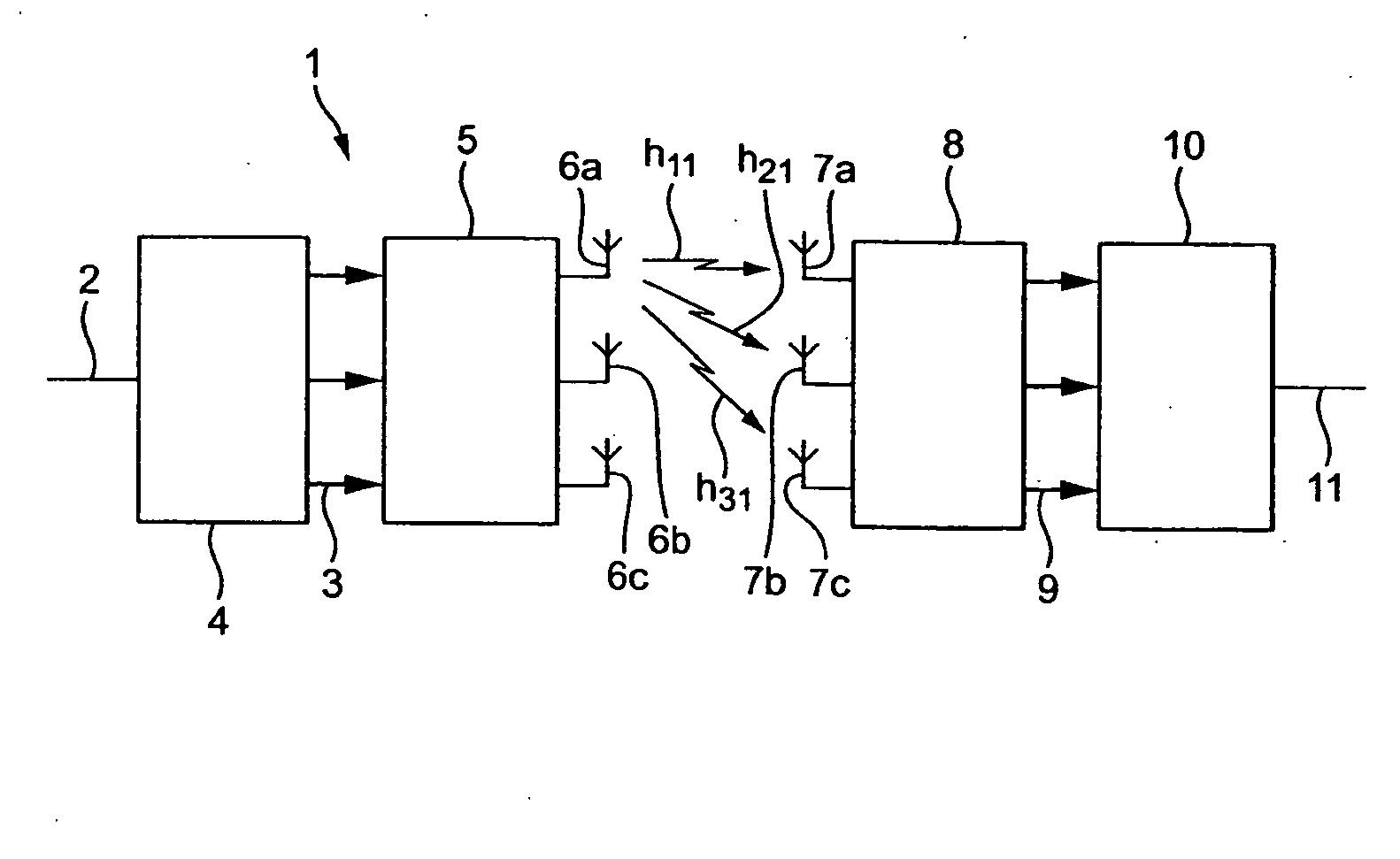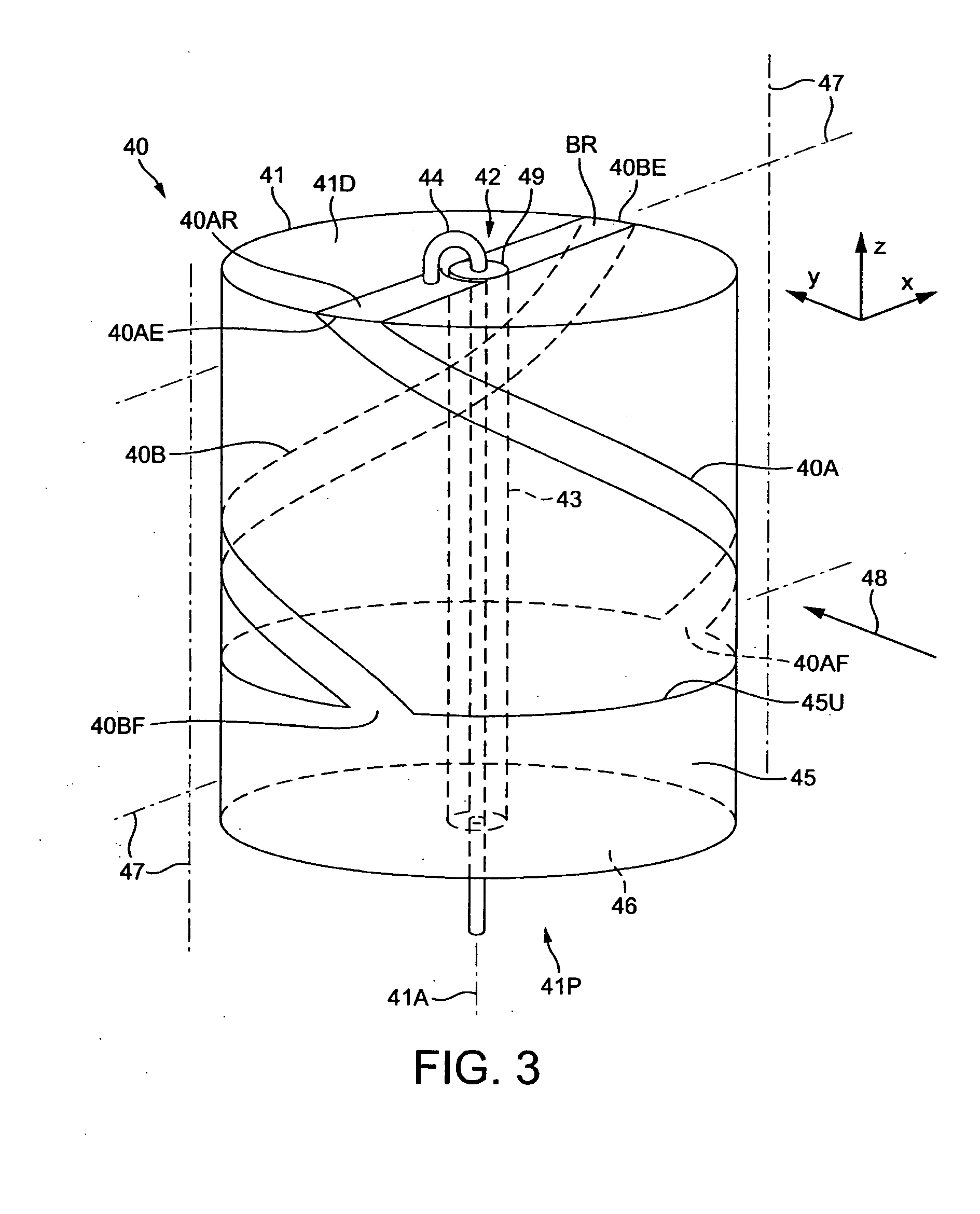Radio communication system
a radio communication system and radio communication technology, applied in the field of radio communication devices, can solve the problems of not allowing for any reradiation of received signals, and achieve the effects of reducing coupling between antennas, and maintaining signal strength
- Summary
- Abstract
- Description
- Claims
- Application Information
AI Technical Summary
Benefits of technology
Problems solved by technology
Method used
Image
Examples
Embodiment Construction
[0058]Referring to FIG. 1, in a MIMO radio communications system 1 a data stream 2 is split at the transmit end into a number of orthogonally coded sub-streams 3 by transmitter signal processor 4. The sub-streams are then transmitted by a transmitter 5 via respective transmit antennas 6a, 6b and 6c. At the receive end, each receive antenna 7a, 7b and 7c receives all of the signals transmitted by the transmit antennas. In addition, each receive antenna receives any reflected versions of the individual sub-streams, caused by objects in the environment such as buildings. The receive antennas are coupled to a receiver 8, from which received sub-streams 9 are passed to a receiver signal processor 10. The receiver signal processor combines the received sub-streams to produce reconstituted data stream 11. This includes a data multiplexing process. The MIMO channel that exists in a given scattering environment, may be represented by the channel matrix [H]. This matrix is characterised by tr...
PUM
| Property | Measurement | Unit |
|---|---|---|
| Time | aaaaa | aaaaa |
| Frequency | aaaaa | aaaaa |
| Frequency | aaaaa | aaaaa |
Abstract
Description
Claims
Application Information
 Login to View More
Login to View More - R&D
- Intellectual Property
- Life Sciences
- Materials
- Tech Scout
- Unparalleled Data Quality
- Higher Quality Content
- 60% Fewer Hallucinations
Browse by: Latest US Patents, China's latest patents, Technical Efficacy Thesaurus, Application Domain, Technology Topic, Popular Technical Reports.
© 2025 PatSnap. All rights reserved.Legal|Privacy policy|Modern Slavery Act Transparency Statement|Sitemap|About US| Contact US: help@patsnap.com



